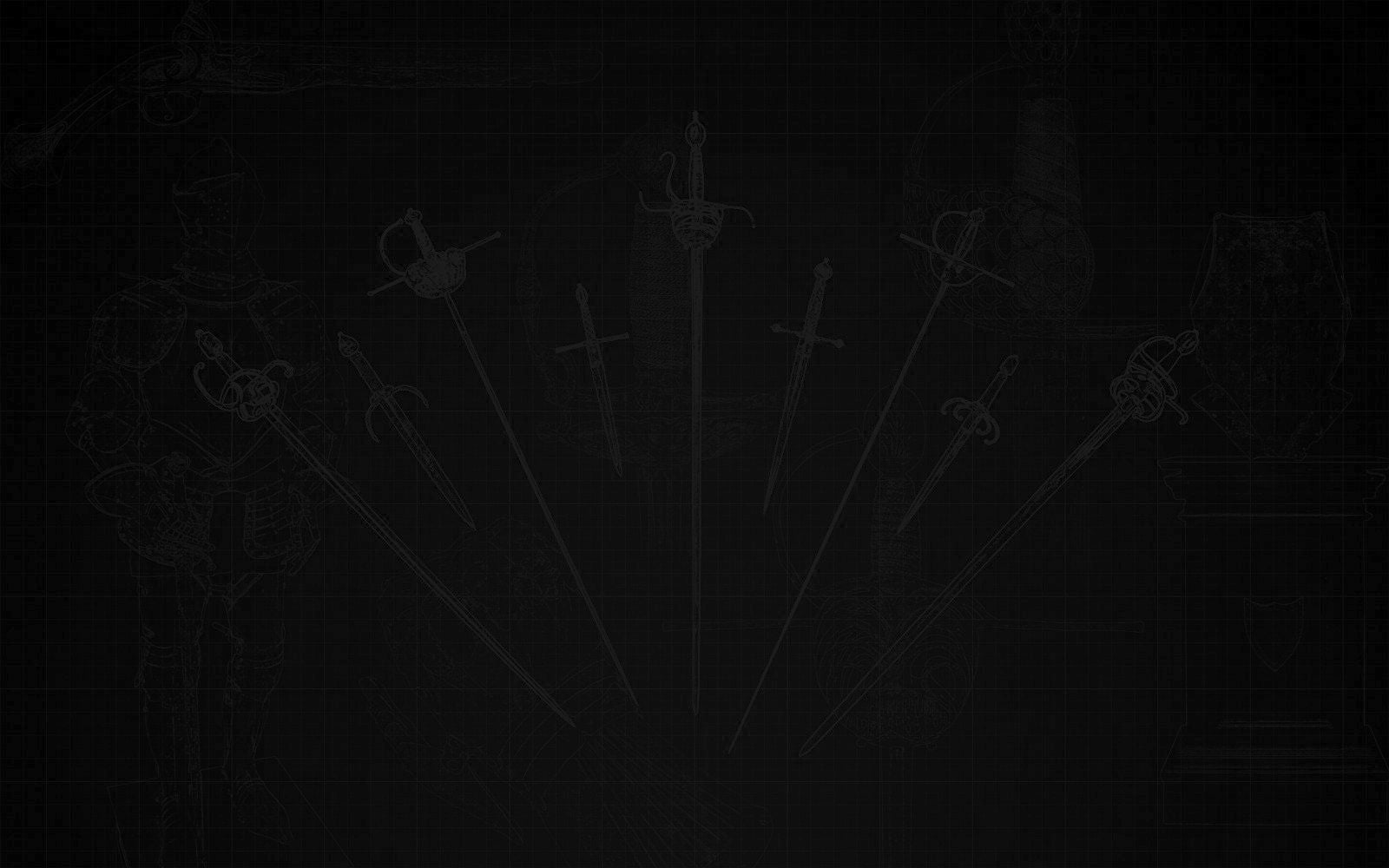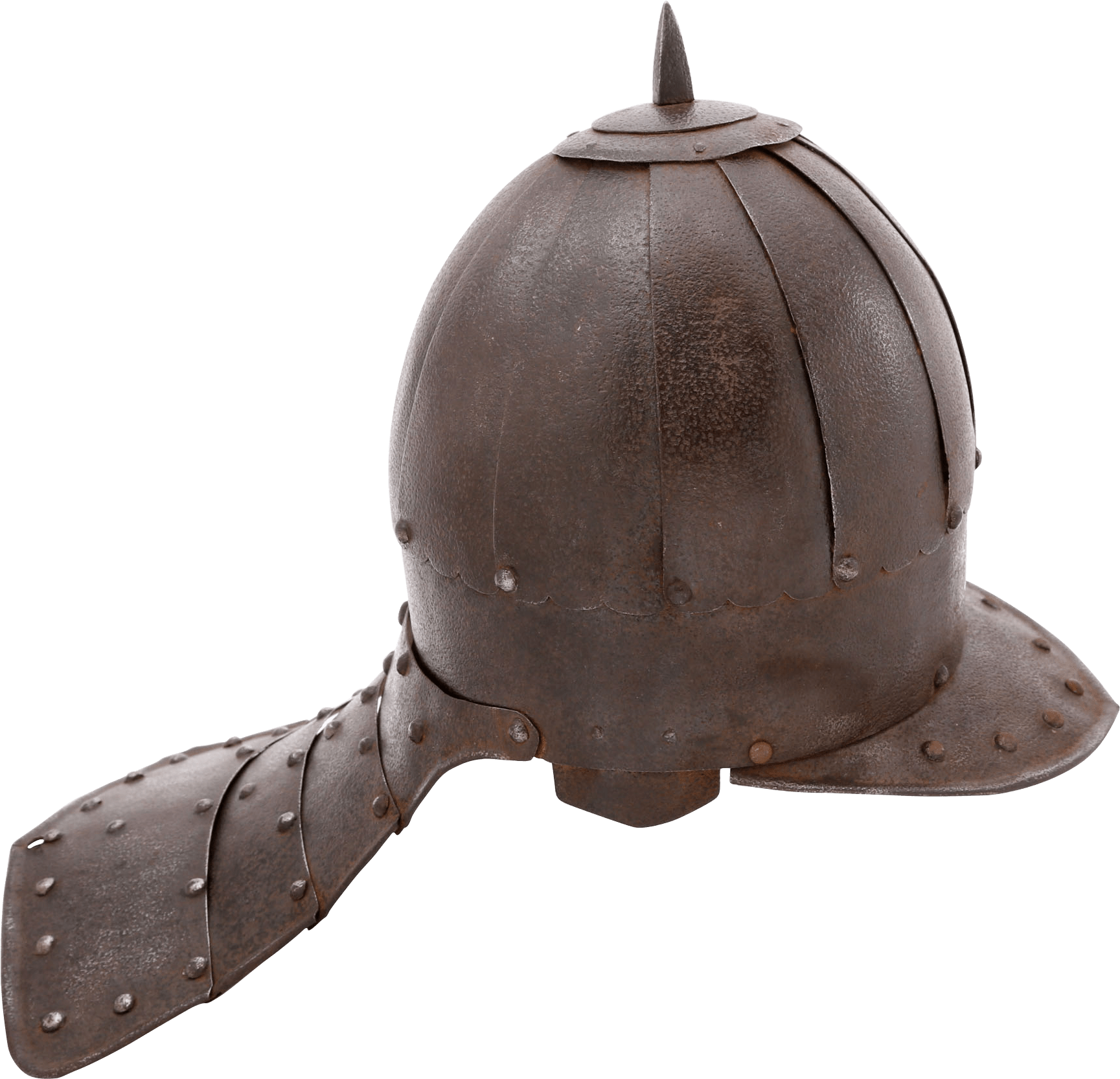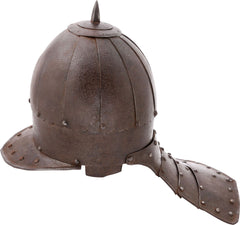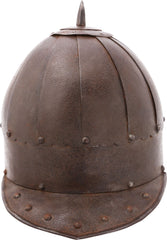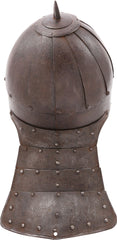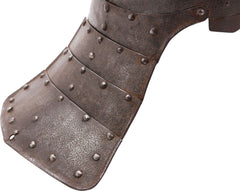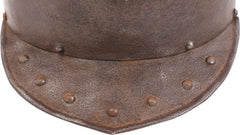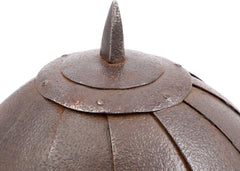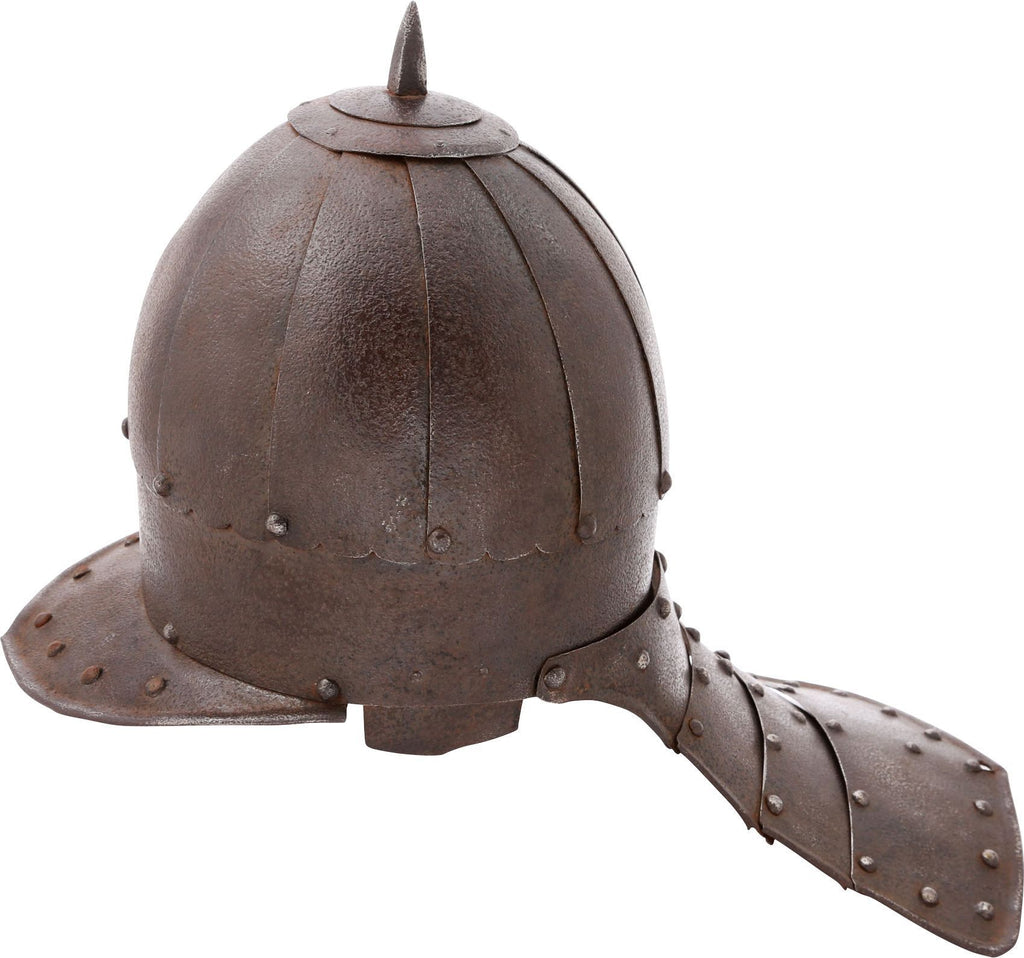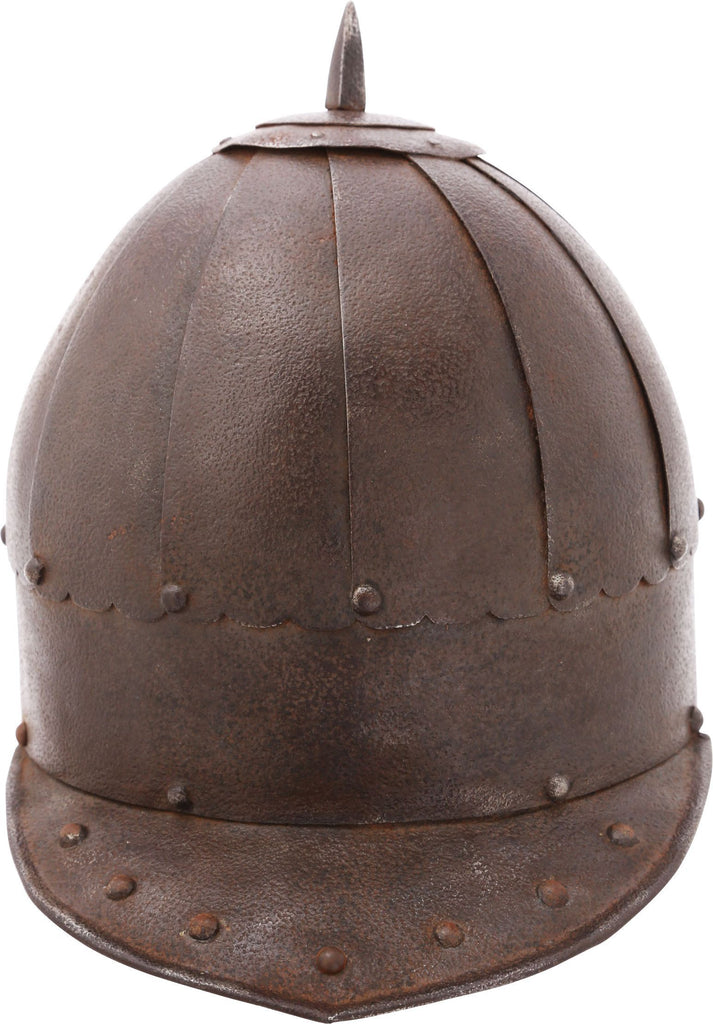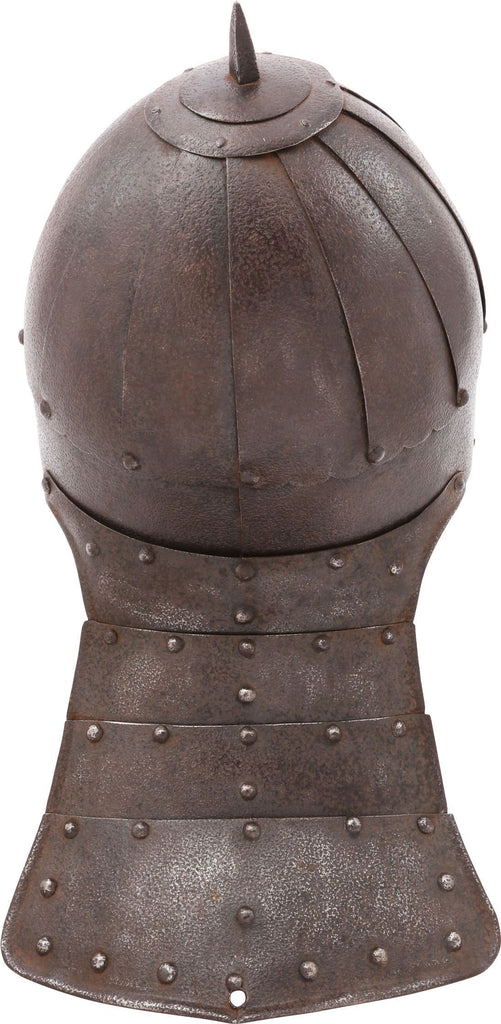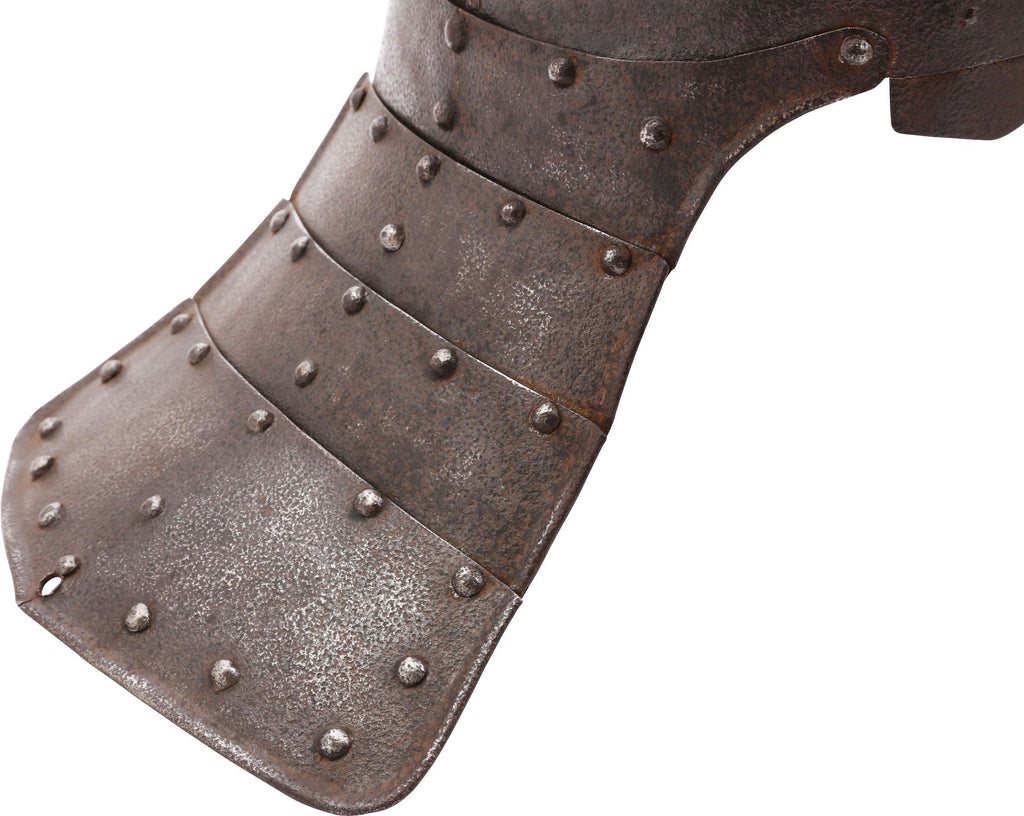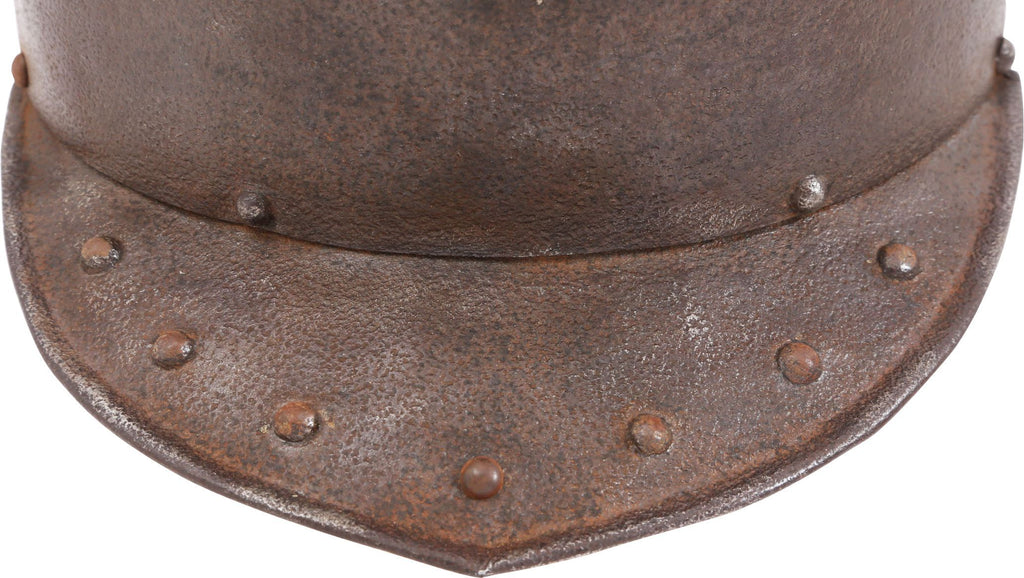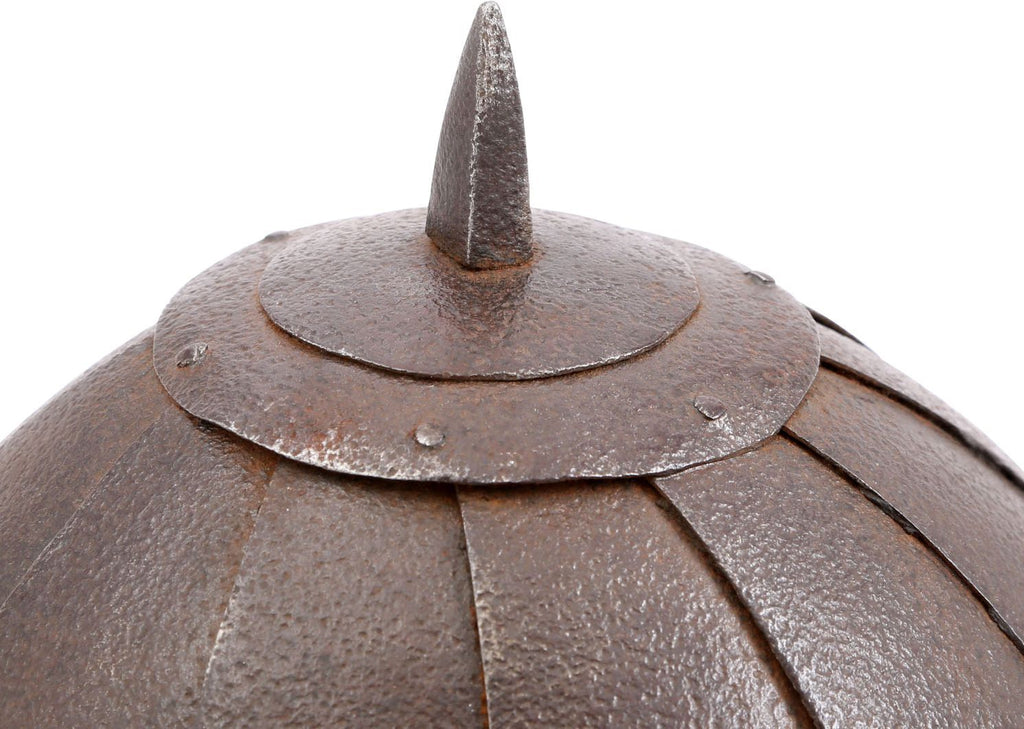This example and the previous demonstrate a concept often overlooked: the pattern book. Designs for weapons and armor, as well as those for many other manufactured goods, were published in books which were sold to craftsmen. As much of the population was illiterate, they relied on visual interpretation of the designs. At first glance, these helmets seem to be products of the same workshop, but closer examination reveals a number of differences. This example is larger throughout at 17” height opposed to 15 ½”. The skull is 8” diameter as opposed to 7”. The skull is made of 12 overlapping plates as opposed to 11 on the previous example. The articulated neck defense is of four plates as opposed to three and the brim is formed as two uniform curves opposed to the broader and more pointed companion. The differences are interpretive on the part of the respective armorers and they surely were made in different workshops from a common pattern. Because of its location Poland was a strategic military force opposing the Ottoman Turks. This was best demonstrated in 1683 when Grand Vizier Merzifonlu Kara Mustafa Pasha laid siege to Vienna, defended by a force of 15,000, with 170,000 troops and 70,000 in reserve. King John Sobieski mobilized an army, ultimately numbering less than half the Turks, and waging a cavalry charge of 18,000, the largest ever in history, routed the Turks. This helmet likely served in that action. See http://www.nationaltrustcollections.org.uk/object/783282 for another example from this group at Rufford Old Hall, Lancashire.




